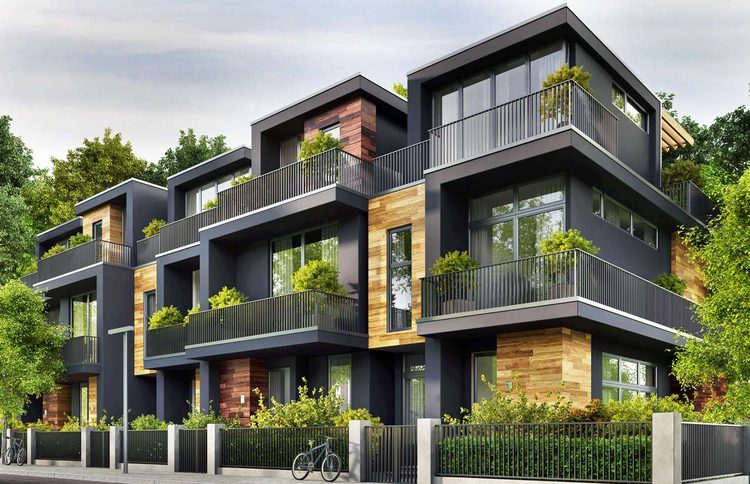How Modern Senior Apartments Balance Privacy and Connection
Today's senior living communities face a unique challenge: creating spaces that honor residents' need for independence while fostering meaningful social connections. Modern senior apartments have evolved far beyond traditional assisted living models, incorporating innovative design elements and community programming that allow older adults to maintain their autonomy while staying engaged with neighbors and friends. These thoughtfully planned residential environments recognize that successful aging involves both personal space and social interaction, leading to architectural and operational approaches that seamlessly blend solitude with community.

The landscape of senior living has transformed dramatically over the past decade, with developers and operators recognizing that today’s older adults seek living arrangements that respect their independence while providing opportunities for social engagement. This evolution has led to sophisticated approaches in community design, apartment layouts, and programming that address the complex balance between privacy and connection.
What Makes Residential Homes for Seniors Different Today?
Modern residential homes for seniors incorporate design principles that prioritize both personal space and community interaction. Unlike older models that often felt institutional, today’s communities feature apartment-style living with private entrances, full kitchens, and spacious layouts that allow residents to maintain their established routines and lifestyle preferences.
These communities typically offer a range of floor plans, from studio apartments to larger two-bedroom units, ensuring residents can choose spaces that match their comfort levels and privacy needs. Common areas are strategically positioned to encourage natural interactions without forcing socialization, allowing residents to engage when they choose while maintaining the option to retreat to their private spaces.
How Do Senior Housing Developments Foster Community?
Senior housing developments today employ thoughtful community programming that creates multiple touchpoints for resident interaction. These might include fitness centers with group classes, libraries with reading clubs, gardens where residents can tend individual plots while working alongside neighbors, and multipurpose rooms that host everything from educational seminars to social gatherings.
The key lies in offering diverse engagement opportunities that appeal to different personality types and interests. Some residents thrive in large group activities, while others prefer smaller, intimate gatherings or one-on-one interactions. Successful communities provide options across this spectrum, ensuring that both extroverted and introverted residents can find their comfort zone.
Why Are New 2-Bedroom Senior Homes Gaining Popularity?
New 2-bedroom senior homes represent a growing trend toward spacious, flexible living arrangements that accommodate various lifestyle needs. These larger units allow residents to maintain separate spaces for sleeping and daily activities, host visiting family members comfortably, or even share their home with a companion or spouse while still maintaining individual privacy.
The additional space also supports residents’ desire to keep meaningful possessions and maintain familiar routines. A dedicated office or hobby room, separate dining area, or guest space can make the difference between feeling cramped and feeling truly at home. This extra room provides the psychological comfort of having personal retreat space while still being part of a larger community.
What Role Does Technology Play in Modern Senior Communities?
Technology integration in modern senior apartments serves both privacy and connection needs. Smart home features allow residents to control their environment independently, from lighting and temperature to security systems, reinforcing their sense of autonomy. Communication platforms enable residents to stay connected with family, friends, and community activities without leaving their apartments when they prefer solitude.
Many communities now offer resident portals where individuals can sign up for activities, communicate with staff, or connect with neighbors at their own pace. This technology-mediated interaction respects residents’ privacy while providing easy access to community engagement when desired.
How Do Architectural Features Support This Balance?
Architectural design in modern senior communities carefully considers sight lines, noise control, and traffic flow to support both privacy and community interaction. Private patios or balconies provide personal outdoor space, while strategically placed common areas create natural gathering points without compromising apartment privacy.
Soundproofing between units ensures residents can enjoy quiet time without disturbance, while common area placement encourages casual encounters during daily routines like checking mail or walking to parking areas. Landscaping and building orientation often create semi-private outdoor spaces where small groups can gather naturally.
| Community Type | Average Monthly Cost | Key Privacy Features | Connection Amenities |
|---|---|---|---|
| Independent Living | $2,500-$4,500 | Private entrances, full kitchens | Community centers, organized activities |
| Active Adult Communities | $1,800-$3,200 | Detached or attached homes | Golf courses, fitness centers |
| Continuing Care Communities | $3,000-$6,000 | Apartment-style living | Multiple care levels, dining options |
| Senior Apartment Complexes | $1,500-$3,000 | Standard apartment features | Limited common areas, basic amenities |
Prices, rates, or cost estimates mentioned in this article are based on the latest available information but may change over time. Independent research is advised before making financial decisions.
The success of modern senior apartments lies in their recognition that privacy and connection are not opposing forces but complementary needs that can be addressed through thoughtful design and programming. By creating environments that honor individual autonomy while providing meaningful opportunities for social engagement, these communities support the complex social and emotional needs of today’s older adults.
As the senior living industry continues to evolve, the most successful communities will be those that maintain this delicate balance, adapting their approaches based on resident feedback and changing preferences while staying true to the fundamental principle that aging adults deserve both independence and community.




